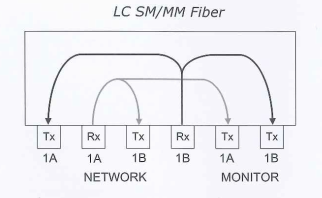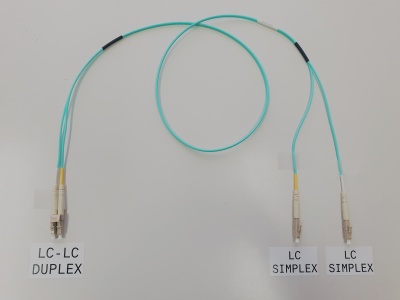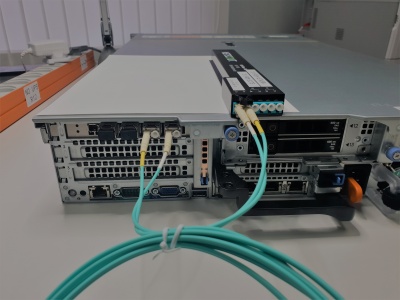Connecting a passive TAP: Difference between revisions
No edit summary |
No edit summary |
||
| Line 48: | Line 48: | ||
=== Link aggregation === | === Link aggregation === | ||
You must create an aggregate that includes the two ports on the accelerator NIC connected to the TAP. In this example, those interfaces are if3 and if4. | You must create an aggregate that includes the two ports on the accelerator NIC connected to the TAP. In this example, those interfaces are if3 and if4. Contact COMCERT or read the Agent Configuration Utility Administration Guide for details on how to do this. | ||
Contact COMCERT or read the Agent Configuration Utility Administration Guide for details on how to do this. | |||
Revision as of 18:04, 6 May 2019
Introduction
Passive Fiber Optic TAPs require little or no configuration. While cabling the network - and site ports is straight forward, the cabling between the TAP output and the NETSCOUT Accelerator NIC is somewhat special.
Solution
| Inspect and possibly clean all fiber optic connectors and ports before making a connection. |
LC SM/MM HD Fiber TAP
TAP internal cabling

Cables required
The two fibers of the duplex LC-LC output of the TAP - indicated with "monitor" - are both used for transmission.
To connect to the NETSCOUT Accelerator NIC, you need a LC-LC-duplex to 2x LC-simplex fan-out cable. It is very easy to make a cable like that.

Connecting the TAP to the NETSCOUT accelerator NIC
Both LC-simplex connectors need to be connected to the input of two separate SFP/SFP+ ports on the NETSCOUT Accelerator NIC on the back of the appliance.

Link aggregation
You must create an aggregate that includes the two ports on the accelerator NIC connected to the TAP. In this example, those interfaces are if3 and if4. Contact COMCERT or read the Agent Configuration Utility Administration Guide for details on how to do this.